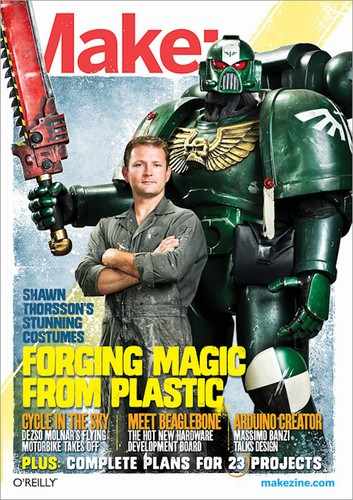PROJECTS REMAKING HISTORY
Levi ben Gershon and the Jacob’s Staff

David Ben-Hador, courtesy of the Israel Philatelic Service, Israel Postal Company
![]() TIME: AN HOUR
TIME: AN HOUR ![]() COMPLEXITY: EASY
COMPLEXITY: EASY
Build the clever instrument that told sailors their latitude for 200 years.
In the days before GPS satellites and computers, how did sailors like Christopher Columbus navigate from one port to another? Well, there were several methods.
Dead reckoning was one. The captain would trail a floating line from his ship and record the time it took to play out completely. He then knew roughly how fast the ship was traveling. By combining speed with a compass heading, he could estimate his change in position.
Dead reckoning wasn’t very good for long-distance travel. Instead, medieval- and Renaissance-era navigators typically “ran down a latitude.” That meant the captain would take the ship to whatever latitude the desired port was on and then steer due east or west until he more or less ran into it.
This simple method required an instrument that would allow the navigator to accurately determine a ship’s current latitude. The first navigational instrument that could do so was invented by a now little-known, but immensely gifted 14th-century French mathematician and rabbi named Levi ben Gershon, also known as Gersonides. He was responsible for a number of important advances in the fields of geometry, trigonometry, logic, and mathematical education. But Rabbi Levi was more than a theoretician. He applied his mathematical discoveries to real-world problems. The most notable example is the Jacob’s staff.
Also called a cross-staff, Levi’s invention was an instrument with a pair of sliding sights mounted on a horizontal bar bearing a carefully incised geometric scale. By sighting the measured object and the horizon simultaneously and observing the arc subtended between the two, the surveyor now had an accurate method of determining angles and therefore latitude. For more than 200 years, the Jacob’s staff was used by European captains to find their way at sea. There was nothing better until the backstaff was invented in 1594 by English sea captain John Davis.
Make a Jacob’s Staff
1. Cut the dowels and cut a 45° angle onto one end of each 4½" dowel.
To make the sighting crosspiece or “transom,” butt the short dowels against either side of the long dowel as shown, in line with each other, with their longest sides facing the same way. Center the brass strips over them, drill four 3/16" holes completely through the brass and short dowels, and fasten them with the machine screws, washers, and nuts (Figure A).
MATERIALS & TOOLS
» Square wooden dowels, 1"×1": 36" long (1), 4½" long (2) If you live south of 30° North latitude, use two 3" dowels.
» Thin brass strips, 1"×5" (2)
» Machine screws, round head, #8×1½" (4) with nuts (4) and washers (8)
» Sheet of paper, 40"×10" If south of 30° North latitude, use a 40"×7" sheet.
» Saw, drill, screwdriver, tinsnips, pen, protractor, straightedge
Go Navigate
After dark, go outside and hold the Jacob’s staff as shown. Slide the sighting crosspiece until the top edge aligns with the North Star and the bottom edge aligns with the horizon. Read the elevation angle of the North Star on the scale marked on the staff; this angle is your current latitude!
If you travel south, the North Star will appear to sink in the sky, so you’ll have to extend the crosspiece to find your current latitude. If you travel north, then vice versa.
Experienced navigators can also use the Jacob’s staff to take noon sun sights (don’t stare at the sun!) and to determine the height or distance of distant objects. Bon voyage!
2. Mark the paper with a vertical line 2" from one of the shorter edges, and a horizontal centerline down the long dimension of the sheet.
Align your protractor’s bottom edge with the vertical line and place the protractor’s center point at the intersection of the 2 lines.
With a pencil, draw lines at 70°, 60°, 50°, 40°, 30°, and 20°, radiating outward from the protractor’s center point to the paper’s bottom edge (Figure B).
3. Place the staff next to the paper’s bottom edge. Align one end of the staff with the vertical line. Mark the staff with the corresponding degrees where the lines intersect the paper’s edge (Figure C). Slide the crosspiece onto the staff so its long side faces the high end of the scale. This is the eye-end.
Congratulations, your Jacob’s staff is complete and you’re ready to navigate! ![]()
William Gurstelle is a contributing editor of MAKE. The new and improved edition of his book Backyard Ballistics has just been released.

